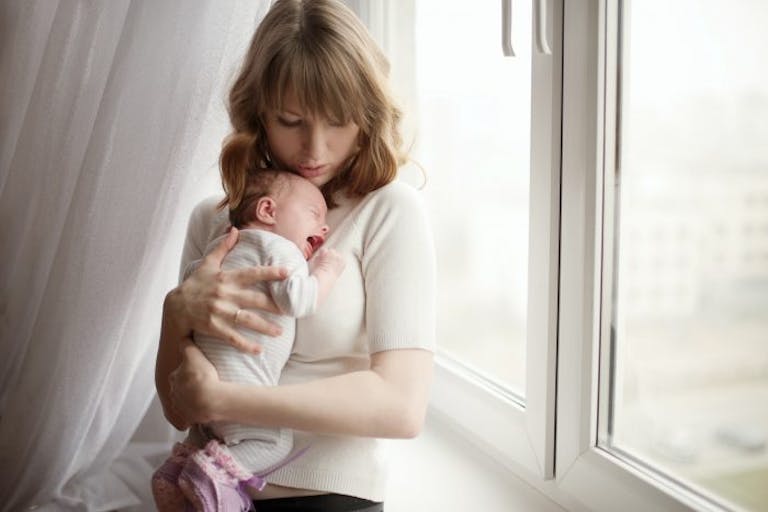
New Archbishop of Canterbury warns of danger in legalizing assisted suicide
Nancy Flanders
·
Analysis·By Anne Marie Williams, RN, BSN
Economist: Birth control has devastating financial consequences for women, children
Despite the popular belief that birth control is necessary to lift women out of poverty, the United States Census Bureau found that more, not fewer, children are being raised by single mothers — and single mothers are more likely to live in poverty.
From 1960 to 2016, the number of U.S. children living with two married parents dropped 19 percent — and the number of children living with just their mother tripled from nine percent to 23 percent of all children under the age of 18. This represents about 17 million children. Numbers from the Pew Research Center report that 27 percent of single mothers live in poverty. Even though there are five times more single mothers raising children than single fathers, single mothers are significantly more likely to be poor than single fathers are.
In 2010, economist Timothy Reichert argued that contraception actually has devastating economic consequences for women and children. He suggested that “the contraceptive revolution has resulted in a massive redistribution of wealth and power from women and children to men,” because it “sets up what economists call a ‘prisoner’s-dilemma’ game, in which each woman is induced to make decisions rationally that ultimately make her, and all women, worse off.” Despite being a lose-lose situation for women, and the children that rely on them, he wrote that because of the “prisoner’s dilemma,” contraception would continue to be the law of the land “unless legal restrictions or social mores ‘tax’ men and ‘subsidize’ women and children.”
Contraception creates a Marriage Market and a Sex Market
Reichert argued that birth control separated what has historically been a mating market, inhabited by roughly equal numbers of men and women, into two separate markets. One market, called the sex market, includes men and women seeking sexual relationships without any plan for marriage or a permanent future together. The other market, called the marriage market, is inhabited by people seeking what its name suggests. This split of one mating market into sex and marriage markets becomes a problem when “imbalances exist in these markets (so) that the ‘price’ of either marriage or sex tilts in favor of one or the other gender.”
READ: Melinda Gates is wrong: Birth control isn’t poverty control
Reichert explained how at any given time, more men are likely to be in the sex market because they don’t have a “biological clock” necessitating that they move into the marriage market by any certain age. Women in the sex market tend to “have more bargaining power than men” for two reasons: relative scarcity and age. Firstly, they are typically in shorter supply in the sex market. Secondly, women in the sex market tend to be younger, as a typical woman will decide by her early 30s that she is interested in marriage and a family, and thus leave the sex market. Younger women tend to be interested in older men, and vice versa, whereas younger men are not equally likely to be interested in older women.
Using charts, graphs, and research from the social sciences to illustrate his point, Reichert contrasted the sex market with the marriage market. In the marriage market, women face significant challenges in finding marriageable men because there are fewer men in the market than women. Reichert isn’t the only one to have made this observation. Riffs on the topics “Why can’t I find a good man?” and “Why are good men hard to find?” abound online, backing up Reichert’s economic analysis with personal anecdotes. He went on to argue that women become more likely to settle for less in order to get married, and then end up getting divorced later on. A 2017 study by Stanford University found that in 2,500 divorce cases studied, women initiated 69% of them.
Reichert further argued that the creation of separate sex and marriage markets caused by contraception correlated with a higher “cost” of infidelity to women than men, higher rates of divorce (and women heading up single-parent households), a “need” for abortion, and even — surprisingly — a driving up of the cost of real estate.
The “Prisoner’s Dilemma”
Reichert considered contraception a “prisoner’s dilemma,” or a situation in which “all parties have a choice between cooperation and noncooperation, and where all parties would be better off if they choose cooperation. But because people in a prisoner’s dilemma setting cannot effectively coordinate and enforce cooperation, all parties choose the best individual choice, which is noncooperation. The social result is disastrous, and everyone is made poorer.” He wrote that “women (and, by implication, children) would be better off had there been no separation of the mating market into separate sex and marriage markets,” because of the long-term negative consequences of the imbalance between the two markets on women, children, and society at large. But, they are nonetheless highly motivated to continue using contraception because of the short-term benefits to themselves.
An Overall Lose-Lose
Reichert’s consideration of contraception’s economic fallout adds to the growing sentiment that birth control is bad for women. It doesn’t dramatically reduce abortion rates and it isn’t necessary to prevent overpopulation. It does, however, have serious health implications and it does pit women against their preborn children. Quite frankly, women deserve better.
“Like” Live Action News on Facebook for more pro-life news and commentary!
Live Action News is pro-life news and commentary from a pro-life perspective.
Contact editor@liveaction.org for questions, corrections, or if you are seeking permission to reprint any Live Action News content.
Guest Articles: To submit a guest article to Live Action News, email editor@liveaction.org with an attached Word document of 800-1000 words. Please also attach any photos relevant to your submission if applicable. If your submission is accepted for publication, you will be notified within three weeks. Guest articles are not compensated (see our Open License Agreement). Thank you for your interest in Live Action News!

Nancy Flanders
·
Analysis
Cassy Cooke
·
Analysis
Nancy Flanders
·
Newsbreak
Angeline Tan
·
Human Interest
Nancy Flanders
·
Issues
Nancy Flanders
·
Human Interest
Anne Marie Williams, RN, BSN
·
Issues
Anne Marie Williams, RN, BSN
·
Analysis
Anne Marie Williams, RN, BSN
·
Analysis
Anne Marie Williams, RN, BSN
·
Issues
Anne Marie Williams, RN, BSN
·